ScanEagle Drone CFD Simulation, ANSYS Fluent
$100.00 Student Discount
- The problem numerically simulates a ScanEagle UAV using ANSYS Fluent software.
- We design the 3-D model with the Design Modeler software.
- We mesh the model with ANSYS Meshing software. The element number equals 3,213,450 and their type is polyhedra.
- Multiple Reference Frames (Frame Motion) are used to model the rotational motion of the propeller.
To Order Your Project or benefit from a CFD consultation, contact our experts via email ([email protected]), online support tab, or WhatsApp at +44 7443 197273.
There are some Free Products to check our service quality.
If you want the training video in another language instead of English, ask it via [email protected] after you buy the product.
Description
ScanEagle UAV Aerodynamic CFD Simulation, ANSYS Fluent Tutorial
Introduction
A small, long-endurance, low-altitude unmanned aerial vehicle (UAV) used for reconnaissance is the Boeing Insitu ScanEagle. It is a Boeing subsidiary.
ScanEagle has a 1,500km range and can run continuously for more than 28 hours. The air vehicle’s operating range is 80 to 126 km/h, and its level flying cruise speed is 90 km/h. The vehicle can climb at a maximum velocity of 150 meters per minute, reaching an altitude of 4,880 meters.
A ScanEagle UAV is modeled in this simulation using ANSYS Fluent software. The device moves at a speed of 27.8 m/s while the propeller rotates at an angular velocity of 1200 rev/min.
The geometry of the present model is three-dimensional and has been designed using Design Modeler software. We do the meshing of the present model with ANSYS Meshing software. The mesh type is Polyhedra, and the element number is 3,213,450.
Methodology: ScanEagle UAV CFD Simulation
The Multiple Reference Frames (MRF) method is used to model the rotational motion of the propeller.
Conclusion
After the simulation process was finished, contours and vectors for parameters such as velocity, pressure and turbulent intensity were obtained. As shown in the velocity contours, the small number of vortexes behind the propeller and the air movement around the UAV are visible.
The maximum amount for the turbulent intensity parameter is exactly behind the propeller due to its rotation.
As was expected, the UAV’s front surfaces experience the highest pressure in the static pressure parameter case. The UAV’s nose, the front surfaces of its wings, and its propellers are under the highest static pressure, demonstrating the importance of giving these parts special attention during production.
The amount of drag and lift force are 17.590563N and 25.787414N, respectively.
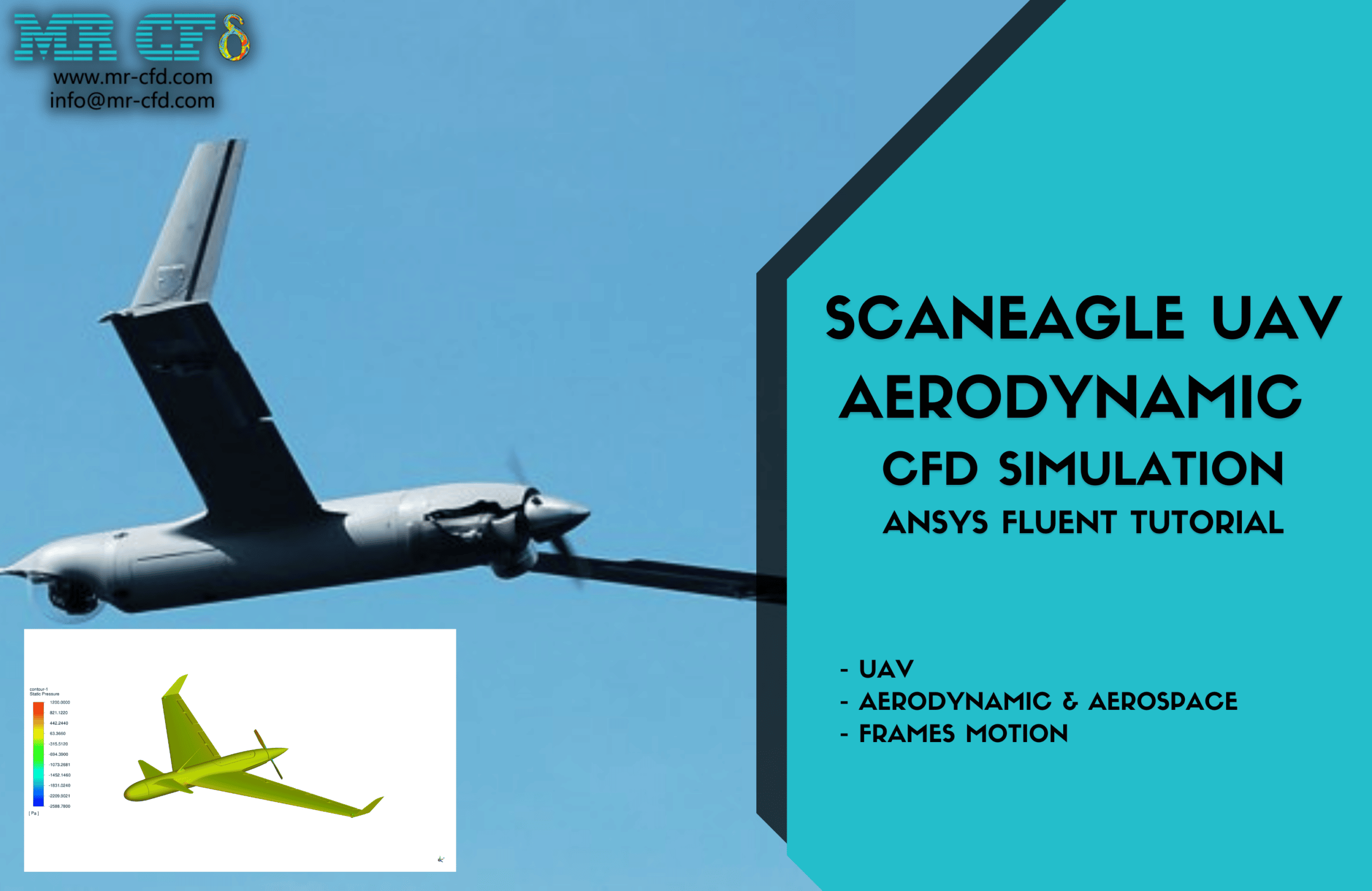
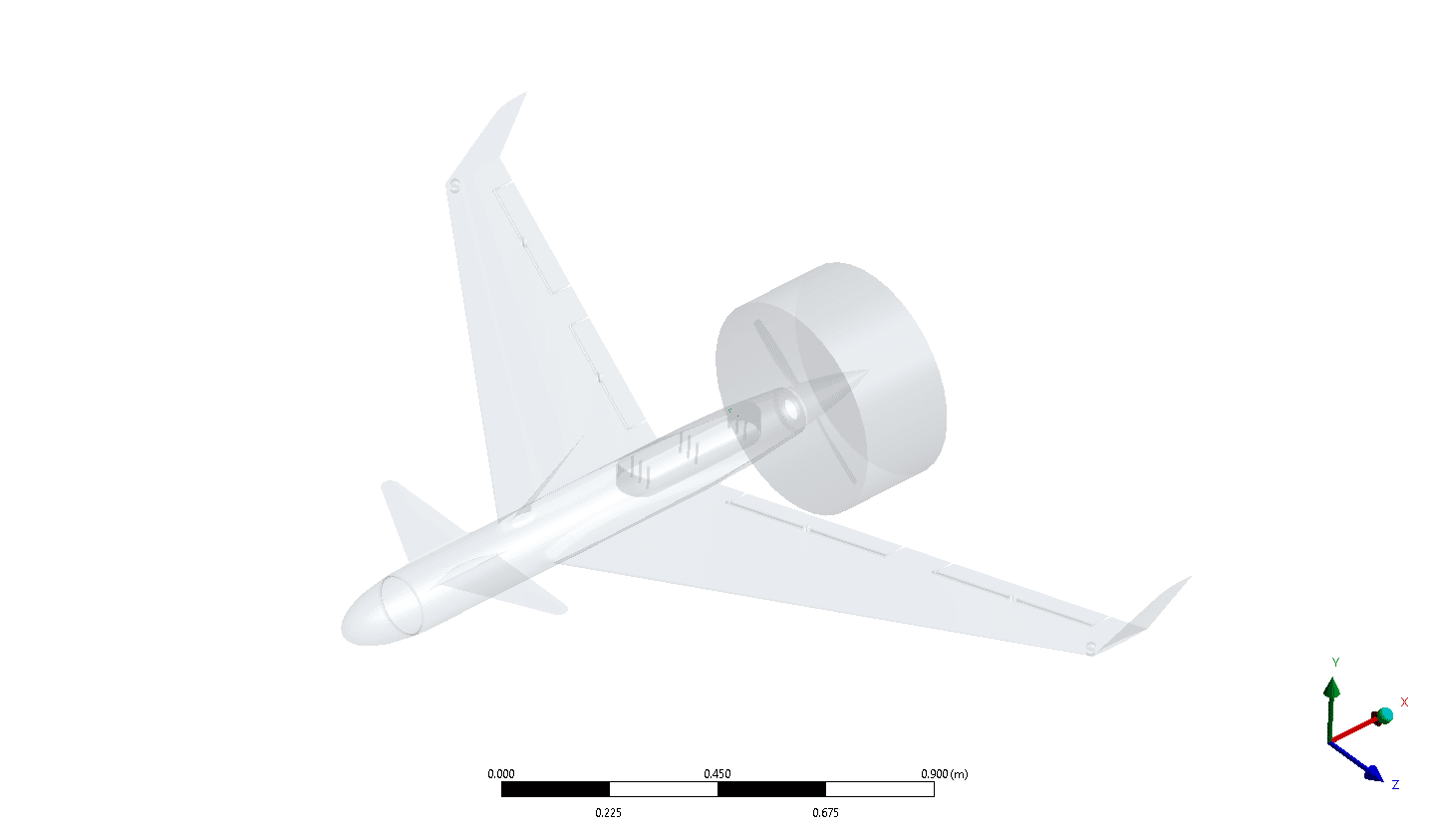
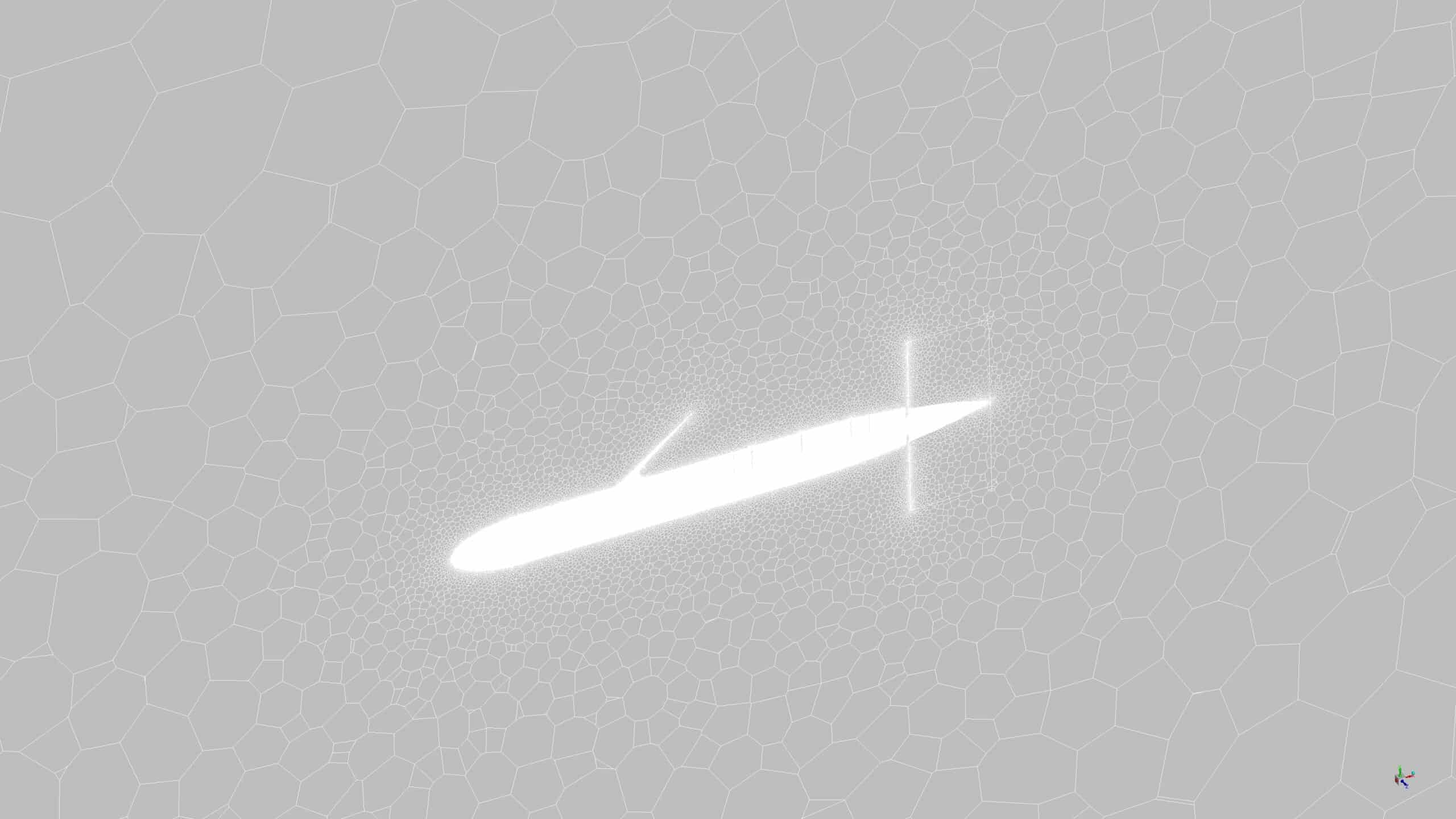
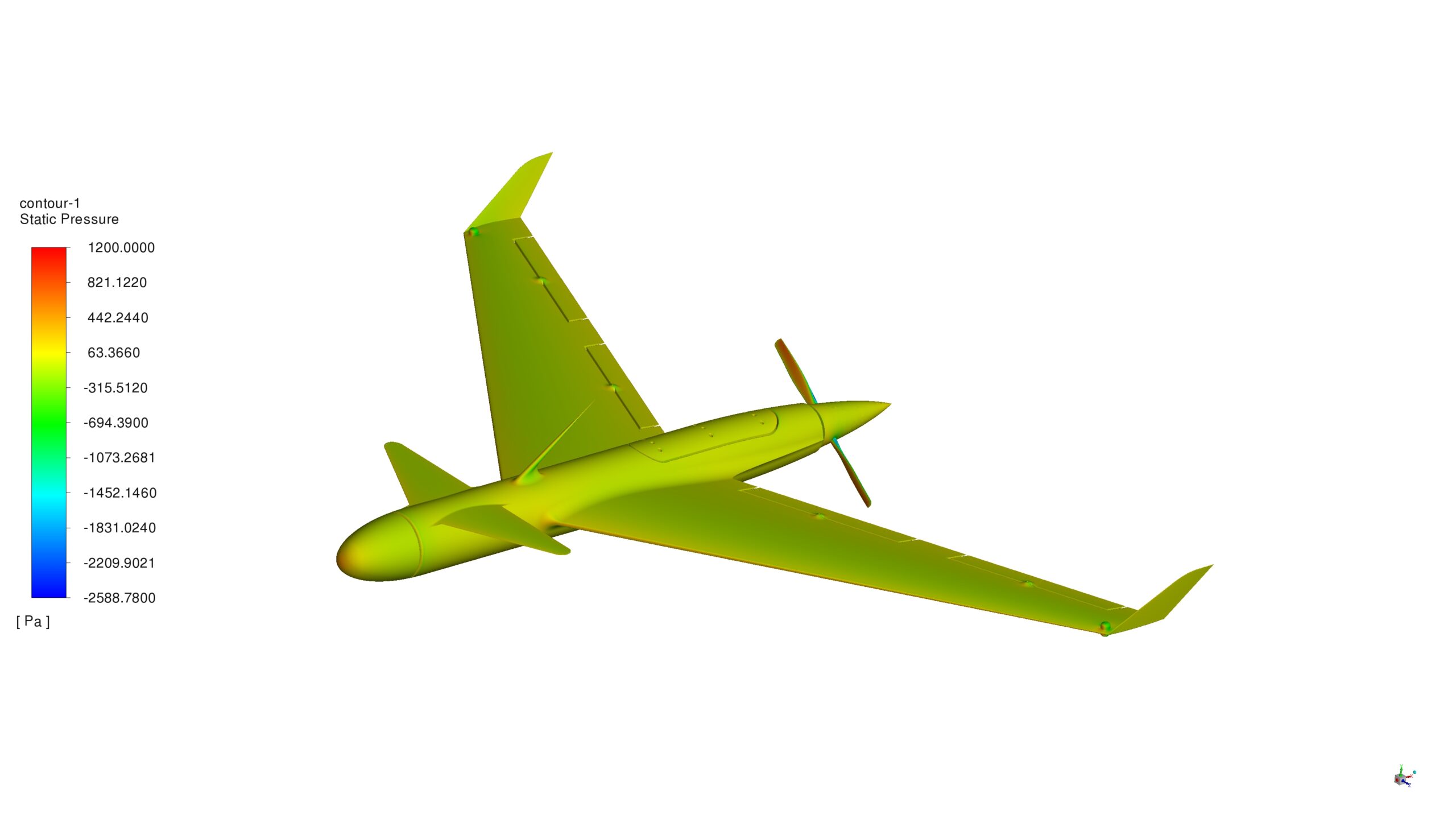
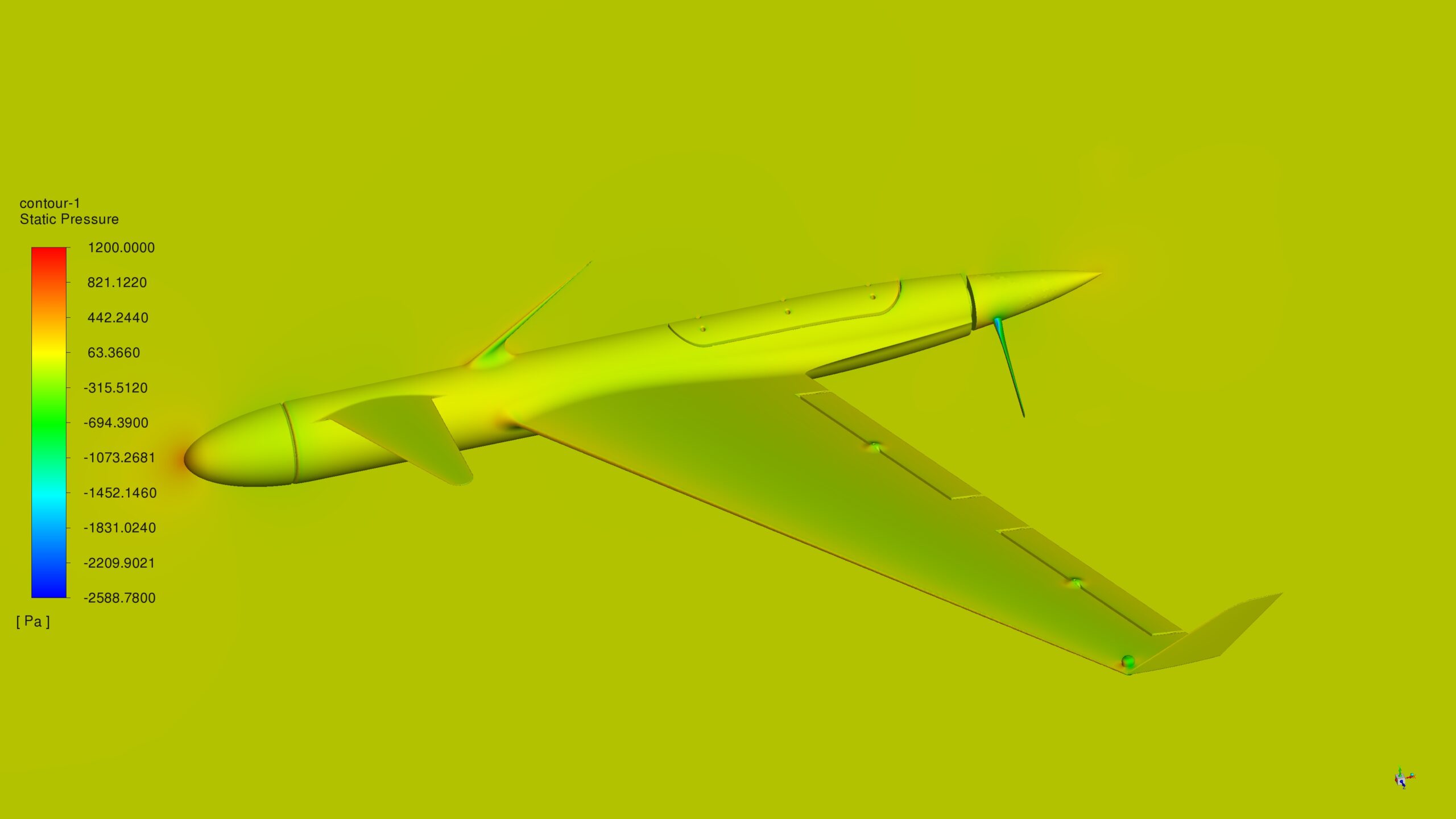
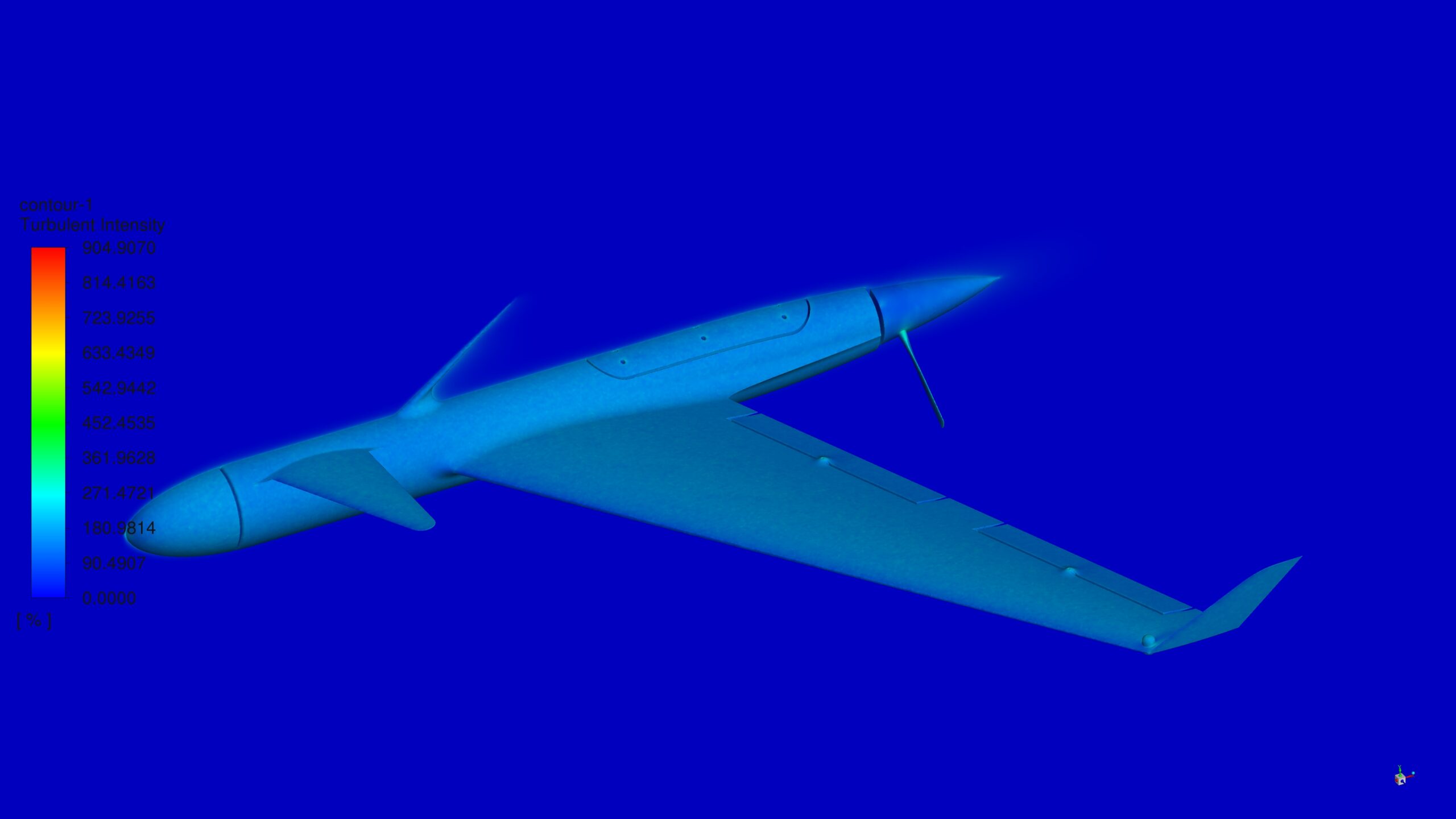
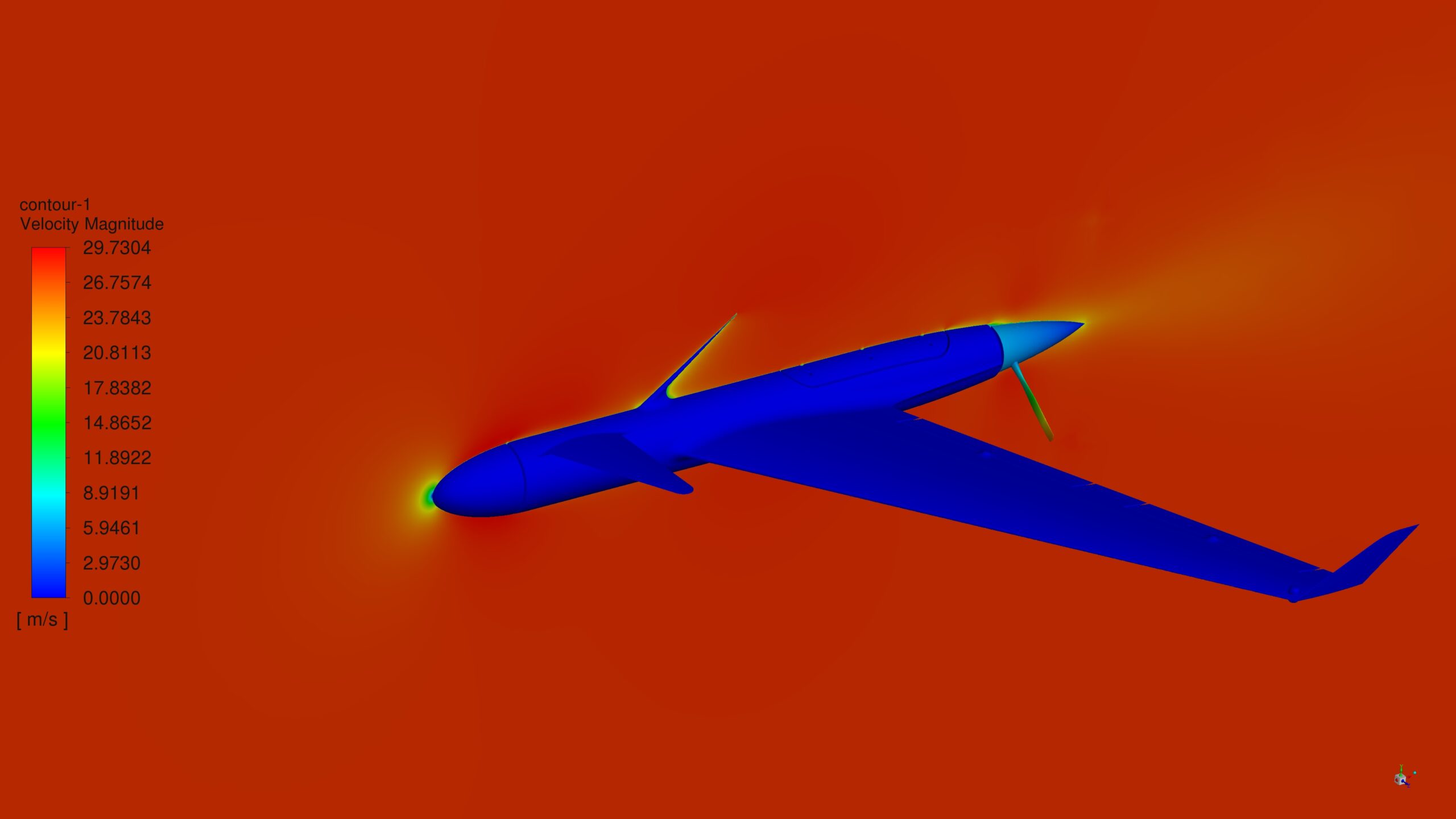
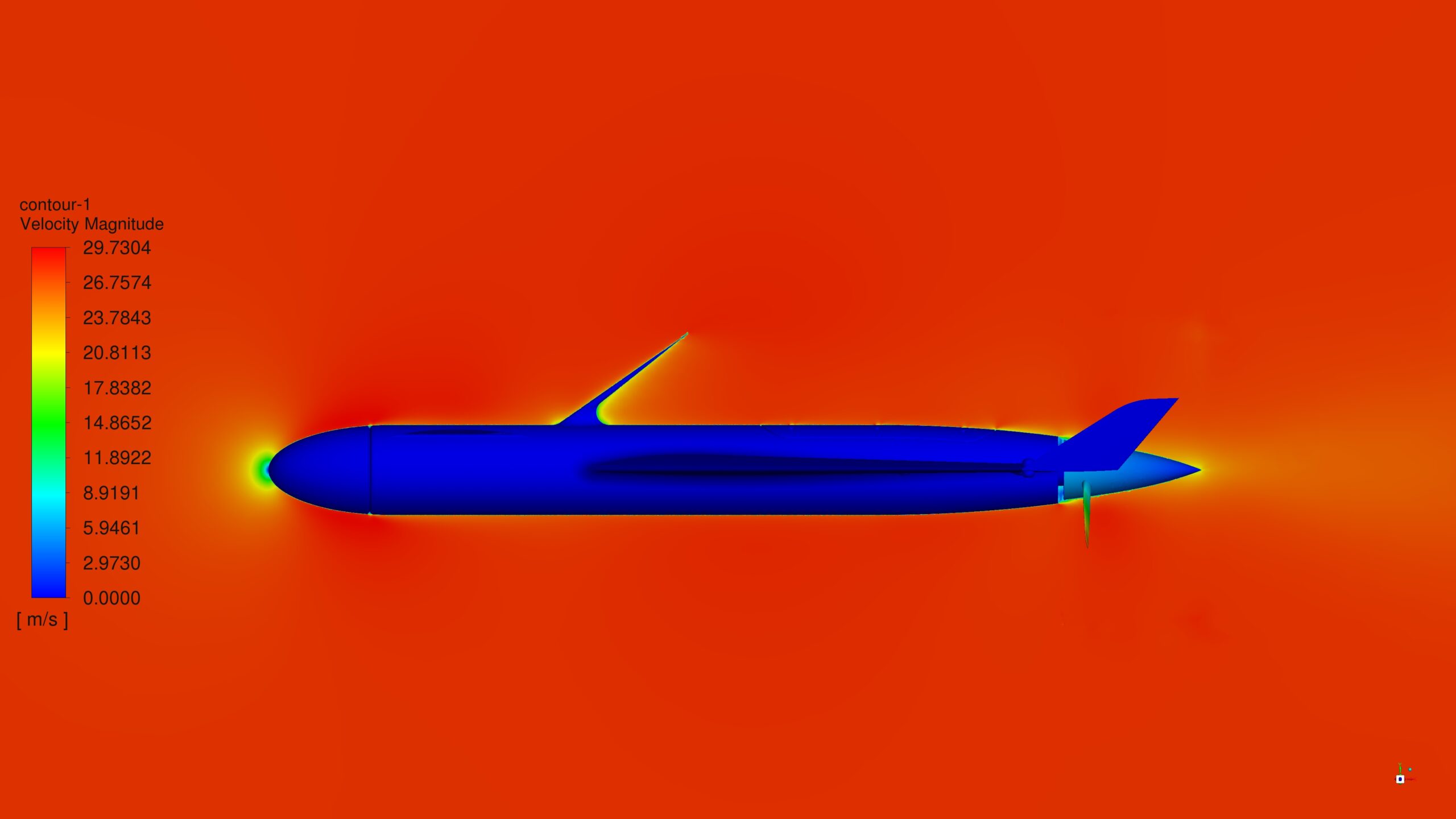
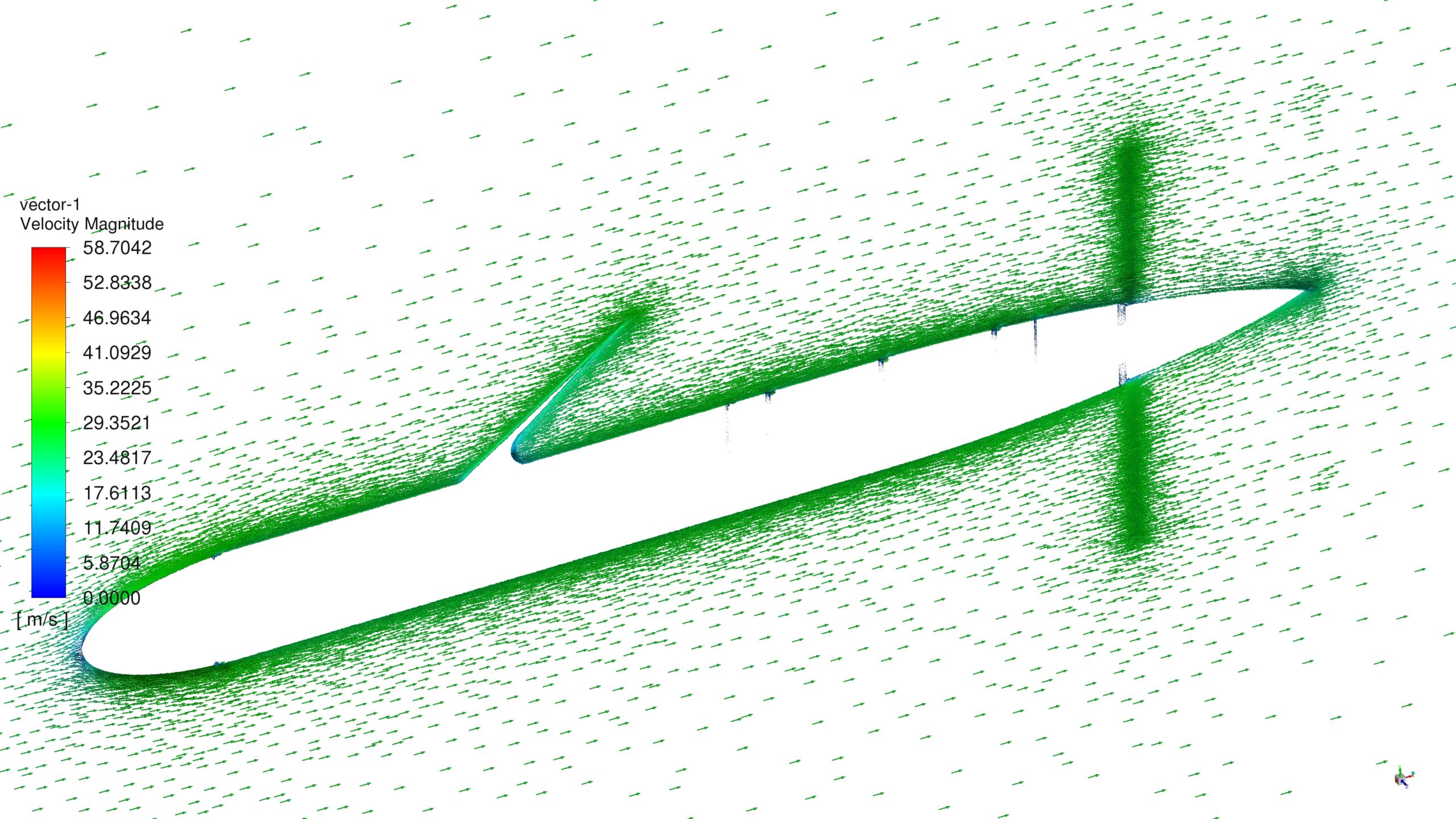
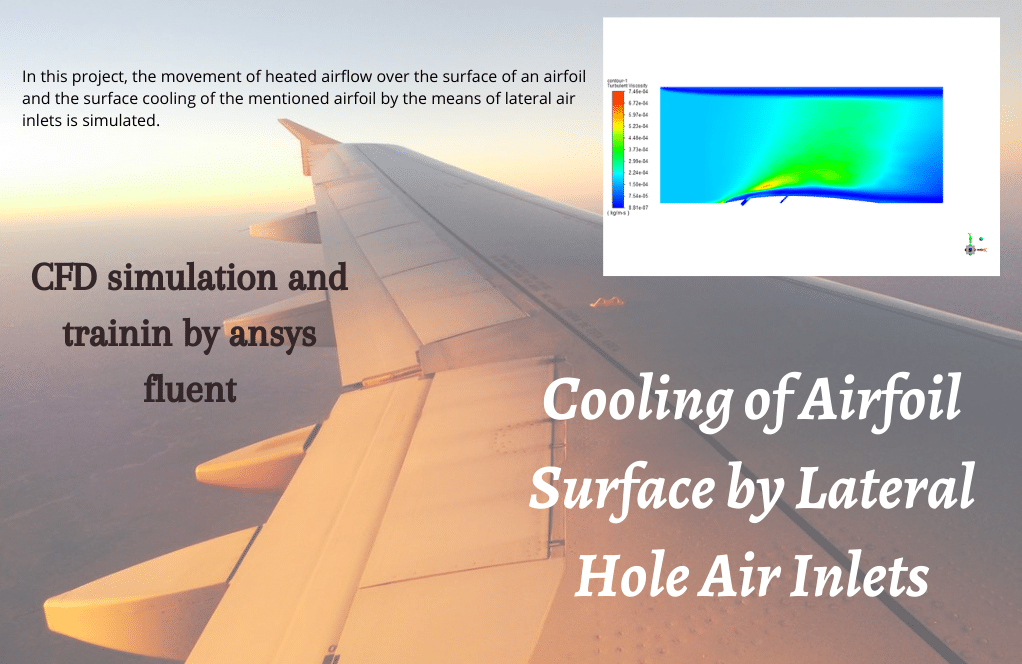
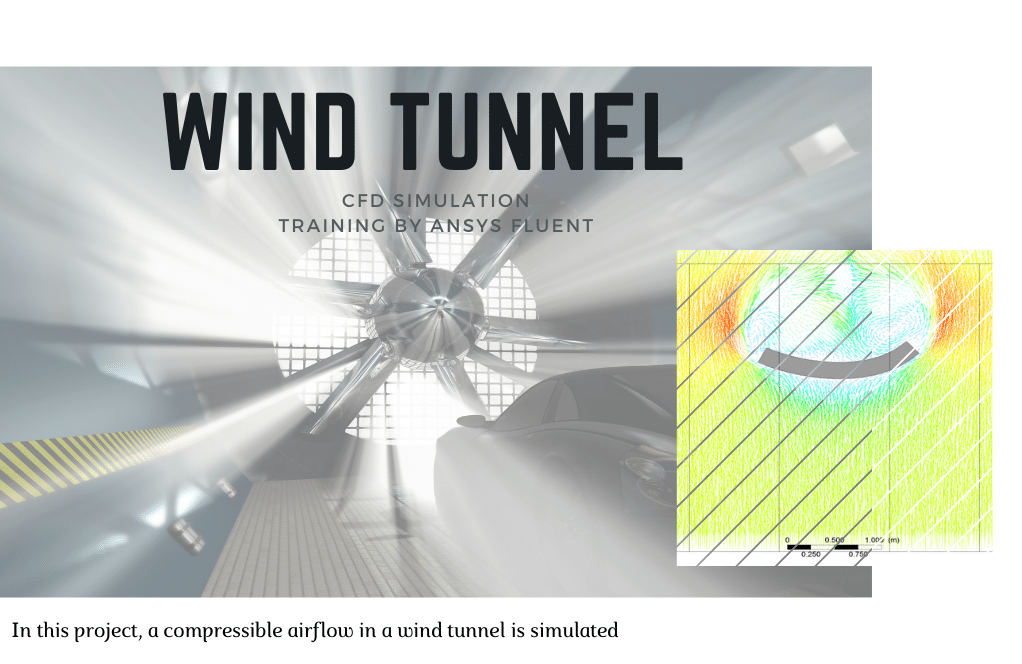

Giovanni Cassin –
I loved seeing the important aerodynamic details for the ScanEagle UAV in this well-detailed simulation study. The clear visualization of pressure profiles and the drag and lift forces gives invaluable insights into UAV design optimization. Fantastic work!
MR CFD Support –
Thank you for your kind words! We’re thrilled to hear that our ScanEagle UAV CFD simulation has provided you with insightful and valuable data. Your feedback motivates us to continue delivering high-quality simulations for design optimization. We look forward to assisting you in future projects!
Prof. Donald Rice –
I’ve been using ANSYS for my projects, and I found this UAV CFD simulation very insightful. The detail in your review implies a thorough analysis was done. Probing along the lines of aerodynamics, could the methodology for simulating the complex vortexes behind the UAV achieved similar results with a different meshing scheme?
MR CFD Support –
We are glad that you found the simulation insightful. In terms of meshing scheme, the polyhedral type used in this study is known for capturing complex flows quite effectively due to its geometrical flexibility and superior flow solution convergence properties. While alternative schemes such as tetrahedral or hexahedral meshing can also be used for such simulations, each scheme carries implications for result accuracy, convergence stabilities, and computational cost. It is possible to attain similar results with careful tweaking of the mesh refinement and quality checks; however, Polyhedra mesh commonly offers a good balance for complex aerodynamic studies like the one performed for the ScanEagle Drone.
Kyle Heathcote –
The tutorial for the ScanEagle Drone CFD Simulation was fantastic—such detailed insights into the aerodynamics of the UAV. Truly a testament to the capabilities of ANSYS Fluent in modeling complex airflows and providing practical results for UAV design.
MR CFD Support –
Thank you so much for your positive feedback on our ScanEagle Drone CFD Simulation tutorial! We are delighted to hear that the level of detail and insights met your expectations and that you appreciate the power of ANSYS Fluent for aerodynamic analysis. Your satisfaction is our top priority, and reviews like yours make our efforts truly worthwhile.
Ardith Beer –
I just completed the ScanEagle Drone CFD Simulation and I’m thoroughly impressed with how ANSYS Fluent handled the complex aerodynamics involved. Witnessing the velocity contours and observing the minimum vortex formation behind the propeller gave me a solid understanding of the drone’s aerodynamic efficiency. The accurate reflection of turbulent intensity right behind the rotating propeller was fascinating, and I genuinely appreciate the details on pressure distribution which underscores the importance of design considerations for frontal UAV components. The lift and drag force readings were also valuable takeaways. Overall, this tutorial was enlightening, and the simulation performed brilliantly.
MR CFD Support –
Thank you so much for your feedback! We’re thrilled to hear that you found the ScanEagle Drone CFD Simulation tutorial to be impressive and enlightening. At MR CFD, we’re committed to providing comprehensive and detailed simulations to aid understanding of complex aerodynamic phenomena. It’s great to know that our efforts are appreciated and that the tutorial has enriched your knowledge in UAV aerodynamics. If you need any further assistance or have additional queries in the future, please don’t hesitate to reach out to us. Thank you for choosing MR CFD!
Caden Larson –
I’m interested in how the drag and lift forces were determined in the ScanEagle UAV simulation. Could you provide more detail on how ANSYS Fluent calculates these aerodynamic forces, and were any specific turbulence models used in this study?
MR CFD Support –
The drag and lift forces in the ScanEagle UAV simulation were determined using the integral of pressure and shear forces over the UAV’s surfaces in the flow field. ANSYS Fluent calculates these forces by resolving the flow around the geometry and summing up the forces in the respective directions. A specific turbulence model would have been selected based on factors such as the flow regime and accuracy requirements; common choices can be k-epsilon or k-omega models, but the exact turbulence model used in this simulation was not specified in the provided description.
Verona Willms –
This CFD simulation tutorial was fantastic for understanding UAV aerodynamics. The clarity of the explanation and quality of the visualization for pressure and velocity were impressive. It was especially interesting to see how the MRF method can effectively simulate the propeller’s motion.
MR CFD Support –
We are glad to hear that you found the tutorial on ScanEagle UAV aerodynamics insightful! We strive to provide comprehensive learning materials for our clients and we’re delighted that you appreciated the level of detail and visualization quality. Thank you for your kind words and for choosing MR CFD for your learning experience!
Xander Ziemann –
I’ve always been fascinated by drones, and the CFD simulation results of the ScanEagle are really impressive. Kudos for achieving such a detailed analysis and for capturing the aerodynamic behavior so accurately. The efforts from MR CFD in meticulously presenting data like pressure distributions and turbulent zones around the UAV give valuable insights for design improvement.
MR CFD Support –
We appreciate your enthusiasm and kind words! It’s very rewarding to hear from a satisfied customer, and we’re thrilled that our CFD simulation for the ScanEagle Drone offered the detailed insights you were looking for. Our team strives to provide high-quality, precise analyses to help inform and advance UAV design. Thank you for your feedback and for choosing MR CFD’s products for your aerodynamics insights.
Prof. Alyson Langworth III –
I’m really impressed with the level of detail in the ScanEagle Drone simulation. The results must offer valuable insights for UAV design. Could you detail how the MRF method was applied for the propeller movement and how this affects the accuracy of aerodynamic predictions?
MR CFD Support –
Thank you for your positive feedback! In this simulation, Multiple Reference Frames (MRF) is used to simulate the rotating motion of the propeller. MRF is a steady-state approximation technique where different reference frames are employed for different parts of the model. The propeller’s domain operates in a rotating reference frame, capturing the rotational effect, while the rest of the domain remains stationary. This means that without the complexity and computational cost of transient simulations, MRF provides a way to account for the critical effects of rotation on airflow, which enhances the precision of the UAV’s aerodynamic predictions. By correctly solving for the velocity, pressure distributions, and force computation, the design can be further optimized based on these insights.
Myrtis Cummings –
I am truly impressed with the level of detail in the ScanEagle UAV CFD Simulation! Did the results show whether design modifications might be needed to improve the UAV’s aerodynamic performance, or were they within the expected performance parameters?
MR CFD Support –
Thank you for your kind words! The simulation aims to give insights into the UAV’s aerodynamic performance. The results fell within expected performance parameters, showcasing efficient aerodynamic characteristics such as minimal vortexes behind the propeller and proper pressure distribution across the UAV’s surface. Design modifications aren’t indicated by the simulation data, as the drag and lift forces align with design expectations. Should performance enhancements be sought in the future, the data provides a solid baseline for comparative analysis of any proposed design alterations.
Whitney Bauch –
Thanks for this in-depth goal-oriented UAV simulation tutorial. The MRF method application and clear visualization of results gave me an excellent insight into ScanEagle’s aerodynamics.
MR CFD Support –
We’re thrilled to hear that our ScanEagle UAV aerodynamics tutorial was helpful to you! It’s fantastic that the MRF method provided clear insights. We appreciate the positive feedback and are here for any further inquiries. Thank you for choosing our learning products for your CFD training needs!
Darrion Gerhold –
The in-depth analysis and clear visuals of the ScanEagle drone simulation have provided a great understanding of the aerodynamics involved. It’s impressive to see the level of detail in simulating the propeller rotation and the resulting air movement around the UAV. Excellent work!
MR CFD Support –
Thank you for your kind words and for recognizing the effort put into the ScanEagle simulation. We are glad that you found the analysis detailed and the visuals clear, and that it helped in your understanding of UAV aerodynamics.
Myrtle Pagac –
Absolutely phenomenal tutorial on ScanEagle UAV CFD Simulation! The insights on vortex behavior, drag and lift calculations, not to mention the detailed coverage of turbulent intensities is outstanding. The visuals made complex concepts very easy to comprehend. Well done MR CFD.
MR CFD Support –
Thank you for the positive feedback! We are thrilled to hear that our tutorial on the aerodynamics of the ScanEagle UAV has been helpful and that the visual contents enhanced your learning experience. It’s always our goal to make complex CFD concepts accessible and easier to understand. We appreciate your compliments!
Jerod Stoltenberg –
The simulation examples seem very detailed. I am curious if the tutorial covers how to interpret the turbulence results accurately?
MR CFD Support –
Indeed, the tutorial provides a comprehensive guide on setting up the simulation parameters, running the simulation, and then how to interpret turbulence results, including the characteristics of the turbulent intensity parameter and what they indicate about potential flow separations or vortex formations.
Dr. Hassan Douglas –
The ScanEagle Drone simulation tutorial was incredibly detailed and informative. The application of MRF to model the propeller’s motion was particularly impressive. I was able to follow along and apply the concepts to my own UAV project, which improved my aerodynamic predictions significantly. Thank you for providing such a high-quality learning tool!
MR CFD Support –
We’re thrilled to hear that our ScanEagle Drone CFD Simulation tutorial was helpful to you and positively impacted your project. Thank you for your kind feedback. Our aim is always to provide detailed and practical educational material to help users like yourself achieve better results. If you have any more projects or need further assistance, don’t hesitate to reach out. Keep up the great work!
Dr. Alanis Bruen –
This ScanEagle Drone simulation tutorial sounds phenomenal! I’ve always been intrigued by UAV design and am thrilled that CFD analysis can provide such insights. The details provided show deep computational analysis with clear outputs. It’s fascinating how forces exerted on each component during flight, like the drag and lift forces detailed, can be precisely calculated. Overall, exceptional work highlighting the powerful capabilities of ANSYS Fluent in the realm of aerospace engineering!
MR CFD Support –
Thank you for your kind words! We’re delighted to hear that our ScanEagle Drone CFD Simulation has piqued your interest and provided you with valuable insights into UAV design. It’s always great to receive positive feedback from our customers, and we appreciate your recognition of the comprehensive analysis and clear results presented. At MR CFD Company, we strive to illustrate the extent of possibilities with CFD tools like ANSYS Fluent, especially for applications in complex fields like aerospace engineering. We look forward to providing more of such learning products to further support your curiosity and interests!
Evert Schulist Sr. –
The ScanEagle Drone simulation captures velocity vectors behind the propeller very well. Impressive results and display of higher pressure on the UAV’s nose!
MR CFD Support –
Thank you for your kind feedback! We are glad that the CFD simulation results for the ScanEagle Drone meet your expectations and that you found the visualization of pressure and velocity around the aircraft informative. We appreciate your recognition of our work.
Mr. Edmond Fahey –
This course was incredibly engaging! The explanation of the MRF method for propeller movement and the detailed understanding it provides for aerodynamics of UAVs were particularly impressive.
MR CFD Support –
Thank you so much for your kind review. We’re delighted to hear that you found the ScanEagle Drone CFD simulation course engaging and informative. Your feedback encourages us to continue providing high-quality learning materials. If you have any more questions or need further assistance with your CFD simulations, please don’t hesitate to get in touch!
Noemi Reilly –
The ScanEagle Drone simulation sounds fascinating! Were there comparisons made with actual flight data to validate the accuracy of the CFD model?
MR CFD Support –
Thank you for your interest and complimenting the ScanEagle Drone simulation. The learning product focuses mainly on the methodology and setup for successfully conducting the CFD simulation in ANSYS Fluent. While actual flight data validation is critical for real-world applications, the tutorial itself may not delve into such data comparisons. That being said, for accurate validations, one would indeed need to compare simulation results with experimental or actual flight data under similar conditions. If you are interested in deeper validation techniques, consider exploring our advanced tutorials that may cover comparison with empirical data.
Hazle Rolfson –
The ScanEagle Drone CFD Simulation product was thoroughly informative. The step-by-step analysis and clear depiction of the airflow and the forces in action were exceptionally helpful in understanding UAV aerodynamics. I was especially impressed with the detailed explanation of the MRF method application and the comprehensive results which included the visual understanding of the high-pressure areas. Thank you for such a well-structured and extremely useful tutorial!
MR CFD Support –
Thank you for your positive feedback! We are thrilled to hear that you found the ScanEagle Drone CFD Simulation tutorial to be informative and helpful. Our goal is to provide comprehensive learning materials that make complex concepts understandable and applicable. It’s great to know that the efforts to explain the MRF method and the detailed analysis of the forces and airflow have aided in your understanding of UAV aerodynamics. If you ever have more questions or need further assistance, don’t hesitate to reach out!
Crystal Becker –
I’m so impressed with the level of detail in the ScanEagle Drone simulation! The high-fidelity modeling of airflow around the propeller and wings was particularly amazing. Understanding the distribution of pressure and turbulent intensity gives incredible insight into UAV aerodynamics. Fabulous job by MR CFD turning this intricate process into an informative learning experience.
MR CFD Support –
Thank you for your positive feedback! We’re delighted to hear that you found the ScanEagle Drone simulation details informative and helpful. Understanding aerodynamics is crucial in UAV design, and we aim to provide comprehensive learning materials to assist enthusiasts and professionals alike. If you have any further interest or queries regarding our products, feel free to reach out. We appreciate you choosing our tutorial for your aerodynamics study!
Trent Muller –
This was my first time delving into a drone-related CFD simulation, and I must admit that the ScanEagle Drone Simulation package was up to the task. The detailed design and expansive analysis highlighted the impact each element had on the aerodynamics—a superb combination of complexity and accessibility in the world of CFD!
MR CFD Support –
Thank you for taking the time to review our ScanEagle Drone CFD Simulation package. We’re thrilled to hear that our product was able to meet your expectations and provide comprehensive insights into drone aerodynamics. Your feedback is much appreciated, and we look forward to bringing more quality simulation products to enthusiasts like yourself!
Suzanne Zulauf –
The tutorial for the ScanEagle Drone simulation was top-notch. It was comprehensive and the step-by-step process really clarified the various stages, especially the use of MRF for propeller simulation. The final results including lift and drag forces provided a succinct understand of the drone’s aerodynamic performance.
MR CFD Support –
Thank you so much for your kind words and positive feedback! We’re thrilled to hear that our ScanEagle Drone CFD Simulation tutorial met your expectations and provided clear guidance on the simulation process. Your satisfaction with the detailed explanation of the MRF method and the final aerodynamic performance results is highly appreciated. If you have any more questions or need further assistance, please feel free to reach out.
Mrs. Mossie Dickinson DDS –
I’m impressed with how well the ScanEagle UAV was simulated. The attention to detail in aerodynamics looks very thorough!
MR CFD Support –
Thank you for your kind words! We’re glad to hear that the simulation met your expectations with its thorough aerodynamic analysis. If you have any more questions or need further assistance, feel free to reach out.
Christiana Doyle II –
I’m thoroughly impressed with your UAV aerodynamics simulation. The use of the MRF method and the detailed results on turbulent intensity and static pressure give an excellent understanding of the aircraft’s aerodynamic profile. Key details like the highest pressure points being on the UAV’s nose and the front surfaces of the wings will surely aid developers. Well done on a finely executed CFD analysis.
MR CFD Support –
Thank you kindly for your appreciative feedback on the ScanEagle Drone CFD Simulation. We are delighted to hear that the methodology and results detailed in our tutorial have provided you with a comprehensive understanding and have proved useful for practical insights. We aim to deliver high-quality educational materials to aid in the development of efficient designs. If you have any further questions or need more tutorials, please do not hesitate to ask.